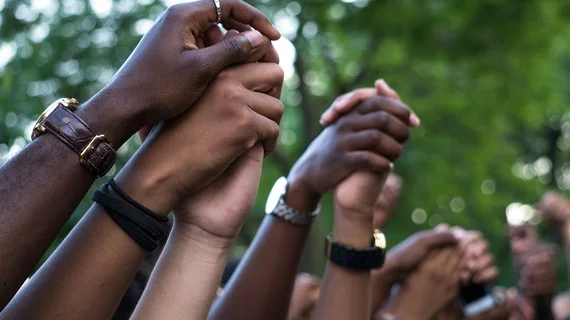After spending a week caring for protesters during heated demonstrations in Seattle, radiologist Jabi Shriki, MD, has a few lessons to impart to his imaging peers.
He served as part of a small team of healthcare pros who came to be known as the “Rancho Bravo medical team,” providing their expertise in the parking lot of a fast food restaurant with the same moniker. Shriki shared his thoughts after being in the heart of the Capitol Hill Occupied Protest, which took in a six-block area of the Emerald City for nearly a month.
“Although the experience was trying at times, volunteering at CHOP gave me a compelling insight into the power of community. Many individuals who visited our tents had never met a radiologist before in their lives. Many other healthcare providers were surprised to see a radiologist working alongside them,” Shriki, an associate professor at the University of Washington, wrote Monday in Current Problems in Diagnostic Radiology. “As much as there is fear and oppression that has galvanized the Black Lives Matter movement, there are reasons to hope that we can rise to the heights necessary to face the challenges of racism,” he added later.
Shriki offered three lessons he learned during that week amid the protests:
1) The fear of police brutality is powerful. With overlap between healthcare workers and protesters, he saw several providers sustain “visible bruises from police batons and stun grenades.” He expressed “shock” that so many, there to simply care for their community, “had the markings of recent police brutality.”
“One of the most powerful messages behind CHOP was also one of the simplest: No one should have to live in fear of those who have sworn an oath to protect the public,” he wrote.
2) “Physicians and healthcare workers cannot stand on the sidelines while others are fighting for their lives,” Shriki wrote. He believes it’s no longer OK for radiologists to expect others to resolve systemic discrimination.
“Professional healthcare worker organizations should acknowledge that racism is a healthcare crisis. We have to say that ‘Black Lives Matter,’ and we also have to work harder to make sure that Black Lives Matter,” he wrote.
3) Know the difference between providing care as charity versus solidarity. The latter assumes a “higher degree of empowerment” from those receiving care. Oftentimes, patients treated during the protests had experienced “terrible interactions” with the healthcare industry previously, and conveying solidarity is crucial to curing such wounds.
“For many, visiting the Rancho Bravo medical team was a moment of healing and reflection to receive healthcare from professionals who were also walking side-by-side in protest and marching alongside their neighbors and community members,” he wrote.
You can read the whole opinion piece from Current Problems in Diagnostic Radiology here.

